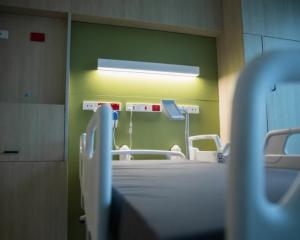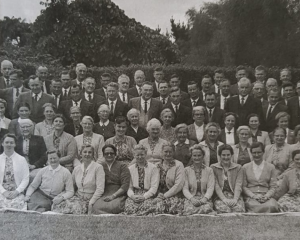Queenstown is set to get a $90 million slice of the Government's $12 billion infrastructure package which was unveiled today.
Jacinda Ardern made the announcement in Auckland in lieu of the traditional State of the Nation speech.

Rail, roads and district health boards are the biggest winners.
Some $6.8b has been earmarked for transport infrastructure in the six main growth regions - Auckland, Waikato, Bay of Plenty, Wellington, Canterbury and Queenstown.
A $300 million capital investment has also been put aside for health.
Ardern said it will take time to rebuild the country's infrastructure after nine years of neglect, but they are getting on with it.
"The previous government announced a number of projects, but never funded them. This coalition government is committing and getting the job done," she said.
Ardern said it was a once in a lifetime opportunity to invest in New Zealand to modernise infrastructure, prepare for climate change and help grow the economy.
"It makes sense to do this now because we've managed the books wisely and have historically low interest rates, which makes our programme affordable," she said.
Transport
Of the $6.8 billion in transport spending, $1.1b will be spent on rail and $2.2b on new roads for Auckland.
Auckland will receive the most funding in its package with $3.48b being spent on:
- Improvements to State Highway One Papakura to Drury South.
- The Northern Pathway- a new walking a cycling link
- An almost $1 billion Auckland rail package
- Penlink- a new transport link between State Highway 1 and the Whangaparaoa Peninsula
- Mill Road- a new connection from Manukau to Drury South
- Northland is receiving $692m, Waikato and the Bay of Plenty $991m, Wellington $1.35b, Canterbury $159m and Queenstown $90m.
NZTA estimated between 7000 and 9000 jobs would be created by the first five transport projects that would be funded alone, she said.
Four rail projects will be funded:
- $315 million for improvements to the Wiri to Quay Park Corridor in Auckland including construction of a third rail line to ease the bottleneck between Wiri and Westfield, providing additional capacity around Westfield Junction, and works around Quay Park to improve rail access to the Ports of Auckland
- $371 million to extend electrification from Papakura to Pukekohe of the Auckland metro network by 19km
- $211 million for improvements to the Wellington, Wairarapa and Palmerston North network and beyond, including upgraded tracks for the Wairarapa and Capital Connection lines, safety connections and refurbishment of Capital Connection carriages, and
- $247 million to develop the Drury railway station, with two new stations at Drury East and Drury West, to increase transport access and amenity value for this fast-growing centre.
Health
Health Minister David Clark said today's announcement will mean DHBs can now get to work on the detailed planning work needed to make all the planned projects and more a reality.
"That will mean better health services for New Zealanders, and a more sustainable and secure future for our public health service," he said.
The $300m investment in health will be divided into four areas:
- $83m on child and maternal health
- $96m on mental health and addiction
- $26m on regional and rural service projects
- $75m upgrading and fixing ageing hospital facilities
- Plus a $20m contingency fund.
Schools
The government had already last year announced $400m in funding for school repairs and other building work.
In addition, up to $4.8m will be available to schools to upgrade their facilities to run on clean power.
Up to $5.2m will be available to hospitals to also make the switch.
Minister for Climate Change James Shaw said eight schools and two hospitals will be the first group of projects in the clean powered public service fund.
"Many of our schools have dirty, old, climate polluting boilers that in most cases were installed in the 1950s and 1960s.
"Because of our support, current and future generation of kids will be kept warm and dry by clean energy as we help them upgrade to using biomass instead of coal," he said.
Grant Robertson called it the biggest boost to infrastructure spending in New Zealand in more than a generation.
He said a decade of under investment in infrastructure before Labour came to power in 2017 was a "handbrake" on the economy and on society.
Careful management of government accounts had allowed the infrastructure spending being announced, he said.
The spending would encourage growth and create many jobs, he added. The transport spending programme - $6.8b - would boost the economy and future-proof it, he said.
Deputy Prime Minister Winston Peters said the programme was the largest infrastructure investment in decades.
"We are going to restore, as a government, our belief in this key utility ... rail is a national strategic asset and we have a vision for rail in our country and we are investing in making that a reality."
"The upgrade programme also includes a serious investment in the regions, which we will be announcing more detail about in the near future," he said.













